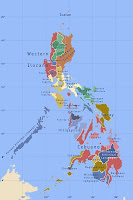Dear Rachel (Ms Magee)
Delighted to help you and well done on picking out Hodges' model. It sounds like an exciting time for you personally being newly qualified and working on a new unit.
Apart from several occasions as a student (late 70s at Winwick Hospital) and more recent liaison through my Trust's NHS Care Record Service Project I have not worked in forensic/secure mental health services. So what follows is a very generic over view. That said Hodges' model is more than an out-liner - brainstormer tool. As your experience grows the model will grow with you and your clients if it is appropriate to share it with them. Anyway, here are some initial thoughts a real mish-mash running through the care (knowledge) domains in turn (with some repetition).
 If you wish to develop and elaborate on what follows, casting a distinct TEMSS light on each care domain I'd be happy to place your prioritised version in a graphic (with you duly ack.)
If you wish to develop and elaborate on what follows, casting a distinct TEMSS light on each care domain I'd be happy to place your prioritised version in a graphic (with you duly ack.)
intra-INTERPERSONAL
Screening on admission. Existing psychic 'injuries'.
An·a·gram: 'secure' = 'rescue' .....
Life history, experiences +ve/-ve (including hospital care), skills, strengths, beliefs, mood, expectations, RISK behaviour, personality, psychological reactions to situation (admission, secure environment, diagnosis, prognosis, treatment - psychotropics, locus of control, helplessness, motivation, family contact...), specific, individualised - person-centred care. Thought disorder? Attribution. Risk - self-harm, harm to others, self-neglect. Psychological dependence. Intelligence. Literacies: 3Rs, visual, social, information. Boredom, Mental capacity. Cognitive functioning. Religious beliefs. Personal skills, strengths, interests. Education - access to training. Response to stress - existing coping mechanisms. Sleep. Attitudes. Sexuality. Biopsychosocial influences PMT (sorry don't wish to seem sexist!)? Stress-vulnerability. Biases, prejudices. Orientation time, place, person (not just older adults).
(YOU as a nurse are also in this domain - your skills, control and restraint, anticipation of needs, observation, empathy, self-awareness, non-judgemental, bias etc....) Assessment tools. My care plan. 'personal' time. Quality - therapeutic time if used.
SOCIOLOGY
Family, pressure on existing - new relationships, spouse-boy/girlfriends, socialisation into the 'secure' environment, dependencies - children / pets. Observation. Group activities. Group therapies. Routine. Co-operation. Team work. Leadership. Status, stigma, respect. Communication. Social skills, Assertiveness. Media - papers, radio, TV. Qualitative research - client narratives. Demographic profiles - catchment areas - deprivation indices.
SCIENCES
Screening on admission. Existing injuries. Access to GP, emergency services if needed. Physical characteristics, height, weight - BP, temp, bloods, mobility. Evidence based care? NICE. Drugs, side-effects (+ substance misuse / alcohol), physical effects of addiction, physical environment - lighting (on-off [fade]), noise (acoustic) signature, colour, architecture (sharp corners vs curves), physical health problems, trauma. ADLs. Assessment toolkit - what's in yours? Nursing (care) process. Hygiene, Domestic services. Infection control. Physical space allocation. Multidisciplinary assessments - occupational therapy, physiotherapy, psychology, pharmacist. Unit viewed as a system - ecology. Complexity within TEMSS.
Literature review. Site visits / conferences. Learners. Staff course study opportunities. Academic partnerships. Quantitative research. Triangulation. Statistics. Data gathering processes. Geographic profile of referrals.
POLITICAL
Human rights, policies, protocols, GP service provision, right of appeal as relevant, 'disciplinary constraints', compliance-concordance, 'offence' category. Client space - privacy / dignity. Access to therapies, rehabilitation, training opportunity, AUTONOMY, ability to exercise choice, institutional 'rules' make-up, clothing, bathing, kitchen, toilet facilities, dignity and privacy, 'unwritten' rules - bullying - vulnerable adults, abuse, financial, sexual, physical. Inspection - Commissioners - accountability. Referral process-pathway. Thresholds, waiting lists? Travel distance - regional resource. Transport links - visiting times. Cost of fares. Staff establishment. Health & safety rules. Disability. Care transitions. Learning disability. Early onset dementia. Ageism (other '-isms') RECORDS. CPA. Community Team. Qualified-unqualified staffing. Patient-relative groups. Service user representation on management. Academic links. Visiting. SAFETY - patients-staff. Serious untoward incident reporting. Translation. Advocacy - short-long term. Other agencies - Social Services, third sector voluntary partners? Philosophy of care, OUTPUTS vs OUTCOMES? 'contracts', Mental Health Act, appeals, hospital managers. Politics of care.
Psychiatry in Dissent. Audit, data collection, IT systems. Access to REPORTS - INTELLIGENCE "How are we doing?" "Where are we going and is that the right way?" Your involvement - engagement - in these processes. Client - carer - public involvement. Finance budgets - (unit budget - resources), staff support / supervision. Energy use. Recycling. Client abilities with finances / debts. Homelessness. Re-housing. Existing tenancy. Opportunity for (regular) TEAM BUILDING ;-) Innovation and creativity. PDP - KSF. Targeted issues: Managed care. Personality disorder....? Professional associations, groups:
http://health.groups.yahoo.com/group/forensic-psychiatric-nursing/
No group for TEMSS for women? Over to you! .....
As you can see the model is high level. It does not DICTATE how your unit is run, what therapy is undertaken. It can help as an aide memoire prompting you and your colleagues to systematically consider all the care domains according to the context-situation and can help ASSURE an holistic assessment and evaluation.
The model can also be used to help explain problems, issues and their solution - or realistic outcomes to clients and their families. So the model doubles as an educational resource - very helpful to engage the INDIVIDUAL or a GROUP (family). You can do this EXPLICITLY using paper or flipchart for example, or implicitly with you using the model mentally as you go along...
By including a POLITICAL domain Hodges' model is ideally suited to your speciality - in fact POLITICALLY and SOCIALLY there are 'nested' issues within your 'secure care' context: gender, ethnicity, equality and equity, public attitudes, institutionalisation, citizenry, public involvement....
This blog includes many labels (on the right hand side) I will also add 'secure services'.
Rachel - I noticed on your organisation's website there are the names of the wards and address - there's a space to fill there...
Good luck, hope this helps and thanks again for your interest.
Best,
Peter










 orcid.org/0000-0002-0192-8965
orcid.org/0000-0002-0192-8965